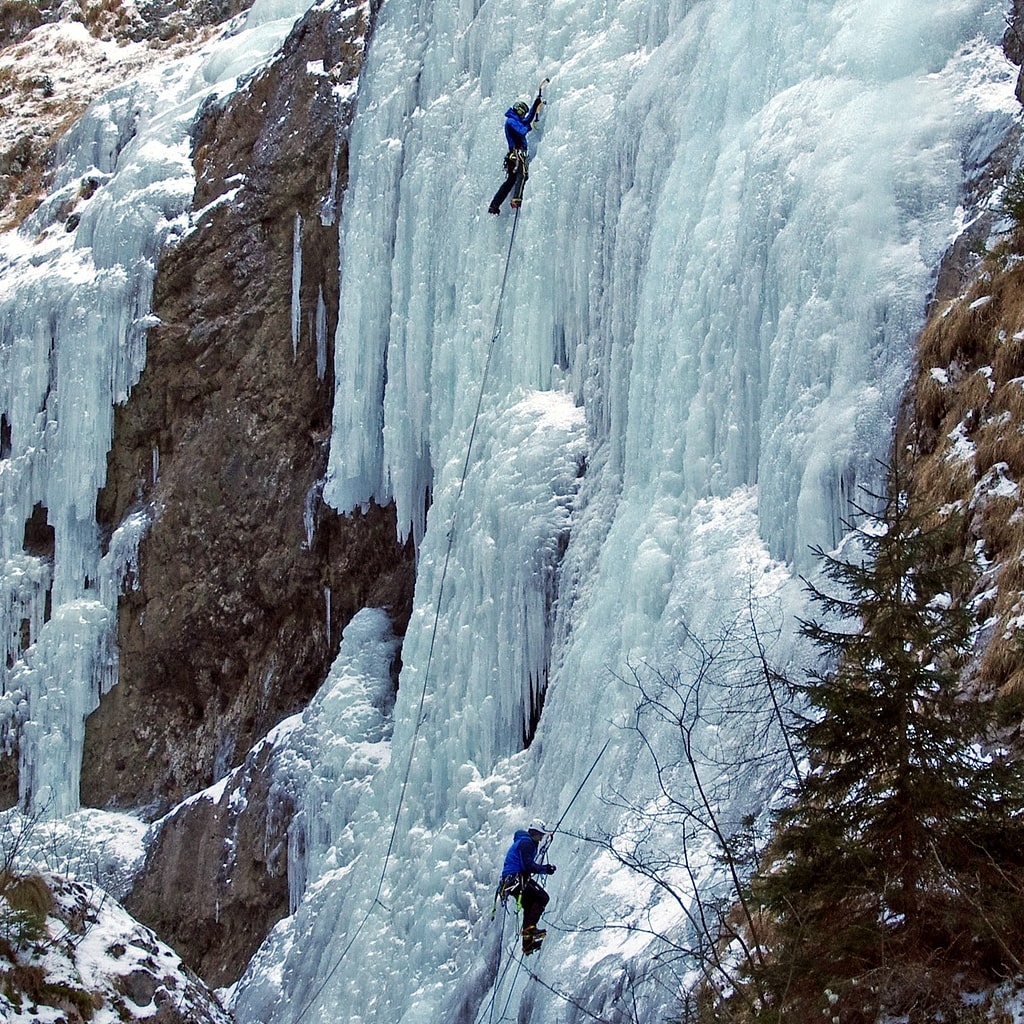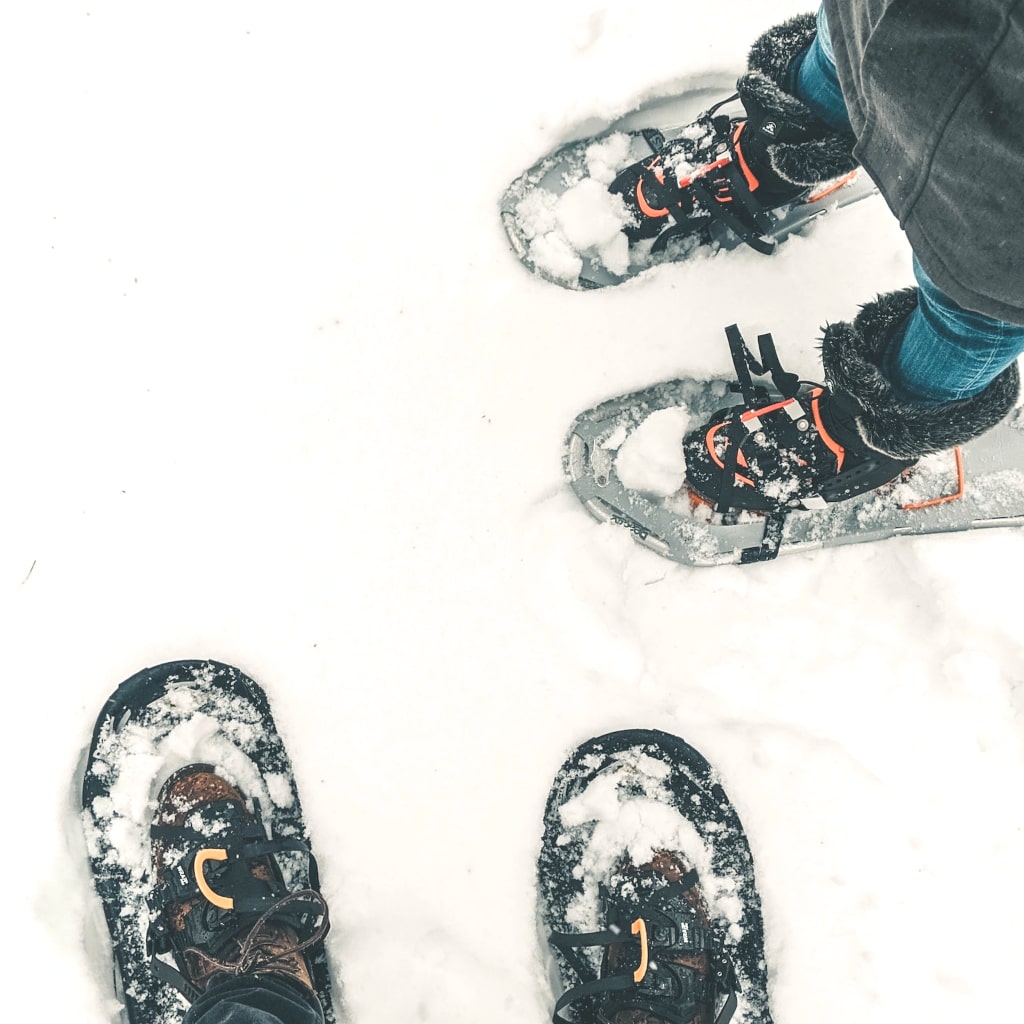Inspired for an Adventure? Check out Beef Stroganoff - Pouch and Beef Stew - Pouch
Free Ground Shipping On All Orders
Over 2,100 Reviews
Add description, images, menus and links to your mega menu
A column with no settings can be used as a spacer
Link to your collections, sales and even external links
Add up to five columns
Add description, images, menus and links to your mega menu
A column with no settings can be used as a spacer
Link to your collections, sales and even external links
Add up to five columns


With winter just about to get going, many of us are thinking of the many joys of snowsports: dashing down plunging slopes, tromping through silent and snowbound backwoods, twirling our way across icy expanses. But these activities—and the inherent rigors of the wintertime environment—come with risks, and it’s important to put winter recreation safety front and center alongside all the fun.
We’re not trying to go full-bore Debbie Downer here, but it’s worth considering a few winter sports safety statistics. Every year in the U.S., hospitals, urgent-care centers, and medical clinics treat several hundred thousand to a few million injuries related to these activities—many of them incurred by children, teenagers, and young adults, and some resulting in lasting impairment.
In this post, we’ll run through basic safety tips for some of the most popular outdoor activities in winter. Remember, prevention is better than intervention when it comes to staying safe out in the snow or on the ice!
Wear Appropriate Protective Gear
As in any athletic or recreational activity, wearing the right kind of protective gear is paramount for winter-sports injury prevention. At the broadest, this ranges from proper layering for snowshoeing or cross-country skiing—vital to stay warm, dry, and ready to respond to changing weather conditions—to the helmets and shin/arm/wrist guards worn by snowboarders. Make sure that helmets, goggles, and other safety gear meets the appropriate standards.
Don’t Forget Sunscreen
Just because you’re not hitting up the summertime beach doesn’t mean you don’t need to worry about sunburns and UV radiation. Indeed, outdoor winter activities can expose you to especially intense solar radiation due to the radiating effect of snow cover and the scanty shade cast by leafless deciduous canopies. Wear a sunscreen rated at SPF 30 or higher, slather it on 15 to 20 minutes before you hit the slopes or trails, and reapply every two hours.
Inspect Winter Sports Equipment Beforehand
Before using your winter-sports equipment—whether it’s ski bindings, ice skates, or that child’s sled you haven’t even looked at for 10 months—give it a thorough assessment. If it’s damaged, worn, or looking generally shoddy, you should repair or replace it.
Drink Plenty of Water
Like sun protection, some of us skimp on drinking enough water during outdoor winter pursuits. But all that bundled-up exertion means you’re working up a sweat, and dehydration can be just as insidious an issue in the wintertime as the height of summer. Maintaining proper hydration also lessens your vulnerability to other conditions such as frostbite.
Beware of Frostbite & Hypothermia
Speaking of frostbite, any outdoor winter activity can put you at risk of this common, and potentially quite serious, malady. The freezing of blood vessels and tissues can result in permanent damage, and treating frostbite—especially out in the elements in remote areas—can be a tricky balancing act. This points up the importance of carefully choosing the right kind of insulating clothing for your particular sport and the weather conditions you’re dealing with. A common mistake is wearing thin, inadequate gloves, or even neglecting hand protection altogether. Watch for signs of frostnip—numb and red skin—and warm the affected area right away.
Hypothermia is another cold-weather concern, and in fact, the ambient temperature doesn’t have to be particularly frigid for this state—caused when one’s core body temperature falls to 95 degrees Fahrenheit or lower—to set in. Windchill can significantly ramp up the risk of hypothermia, as can wearing wet clothing.
Don’t Forget to Warm Up
Diving right into winter exertion with “cold muscles” (if you will) enhances your risk of injury, and furthermore chillier temperatures lead to tightness, contracted blood vessels, and consequently heightened likelihood of cramping and other issues. Do some stretching and engage in some low-key exercise—arm circles, leg swings, planks, and the like—for a few minutes ahead of the activity.
Common Winter Sports Injuries
In this section, we’ll spotlight some of the risks common to particular outdoor winter sports and recreational activities.
Ice Climbing/Winter Climbing
From exposure and head injuries from tumbling ice to avalanches and straight-up falls, winter mountaineers and ice climbers face a whole host of hazards. Proper preparation, appropriate gear, and a rock-solid sense of one’s own abilities and comfort levels are essential in these risky but rewarding pursuits. (Don't forget your Mountain House emergency provisions, either!)
Ice Skating
Skaters at the local rink can obviously be injured from falls and collisions, but the riskiest ice skating by far is that done on frozen natural water bodies. Designated, supervised, and closely monitored skating areas of this sort are the safest bet, as are shallow surfaces such as frozen flooded fields. Falling through the ice is a life-threatening situation on frozen rivers, lakes, and ponds. In the event it happens to you, it’s best to get horizontal in the water and then attempt to slide your body back onto the ice rather than simply immediately trying to pull yourself out. Roll away from the break in the ice instead of standing up near it. Ropes and human chains can be employed in rescue attempts, though always call 911 as well.
Sledding & Tobogganing
One of the more innocent-seeming winter activities, sledding can be plenty dangerous, and indeed is annually responsible for tens of thousands of reported injuries in the U.S. every year. Tumbles, collisions, and treacherous sledding “runout” zones intersecting roads, bodies of water, or solid obstacles are common hazards, with sprains, broken bones, dislocations, cuts, concussions, and other head injuries, and worse possible outcomes.
Downhill Skiing & Snowboarding
Given the high speeds, steep grades, and aerial maneuvers involved, downhill trails and terrain parks can be dangerous for skiers and snowboarders who bite off more than they can chew or get reckless. Backcountry skiers face real peril from avalanches as well, plus general winter-wilderness challenges.
Cross-Country Skiers & Snowshowers
Winter weather-related hazards such as hypothermia, frostbite, and exposure are some of the main perils for cross-country skiers and snowshoers, potentially exacerbated by losing their way or getting all-out lost. Avalanches are also a significant threat in more rugged country.
Snowmobiling
Besides bringing along emergency gear (including extra parts and fluids for their machines), snowmobilers should know the terrain well where they’re riding and stay aware of hazards such as low-hanging tree limbs, barbed wire, and roads. Snowmobiling on frozen lakes or rivers is extremely risky and not recommended. In mountainous terrain, pay close attention to avalanche forecasts and gauge snowslide conditions as you travel along; in recent years, snowmobilers have represented the outdoor-user group most at risk of avalanches in the U.S.
What Winter Sport Has the Most Injuries?
Different sources and different years yield different results when it comes to the injury tally from specific outdoor activities in winter. A ValuePenguin analysis, though, found that skiing accounted for the most winter-sports injuries between 2010 and 2019 with 278,121, followed by snowboarding at 255,749. Next up were ice skating (143,741) and sledding/tobogganing (139,580).
This same ValuePenguin research suggested head injuries were the most common kind of injury to winter-sports practitioners, though shoulder, wrist, and knee injuries were also significant.
Winter Sports Safety Tips: Three Fundamentals
Here are three universal fundamentals of winter-sports injury prevention:
(1) Recreate With Others
Engage in winter sports or outdoor recreation with friends or family, or join guided outings or classes. From avoiding getting lost to more easily treating injuries or evacuating injured parties, it’s always better to have more hands on deck.
(2) Know Your Limits
Biting off more than you can chew—tackling a ski run beyond your level, committing to a night snowmobile ride in unfamiliar terrain against your better judgment, snowshoeing in avalanche-prone mountains without knowing how to assess and test the snowpack for stability—is a big gamble. Match your wintertime fun to your skill level.
(3) Avoid End-of-Day Pushing It
Many injuries in skiing, snowboarding, and even sledding come at the end of the day when you might feel compelled to push it a little, get in one or two more rounds even though you’re tired. This is a good recipe for making silly mistakes or suffering the consequences of poor judgment or dulled reaction times.
Stay Safe Out There This Winter
Keep the above winter-sports safety tips in mind while out there enjoying the snow, and don’t forget to stay fueled up for cold-weather fun with delicious, just-add-hot-water Mountain House meals!

A Beginner’s Ice-Climbing Guide: How to Get Started

15 Best Places To Go Snowshoeing in North America This Winter


Stay Hungry for Adventure
Sign Up for Delicious Outdoor Meals & Exclusive Offers!
By clicking ‘Join Now’, I agree to the Terms of Service and Privacy Policy.


Join the adventure
©2025 Mountain House — All Rights Reserved.
Your Cart is Empty
Continue ShoppingYour Cart
Subtotal
$0.00
EXPRESS PAYMENT METHODS AVAILABLE IN CHECKOUT
Taxes and Shipping Calculated at Checkout
Your ExpertVoice deal.
$[Deal Price]
$[Original Price]
Discount applied at checkout.
On sale now — lower than your ExpertVoice discount.
Not eligible for ExpertVoice discount.














